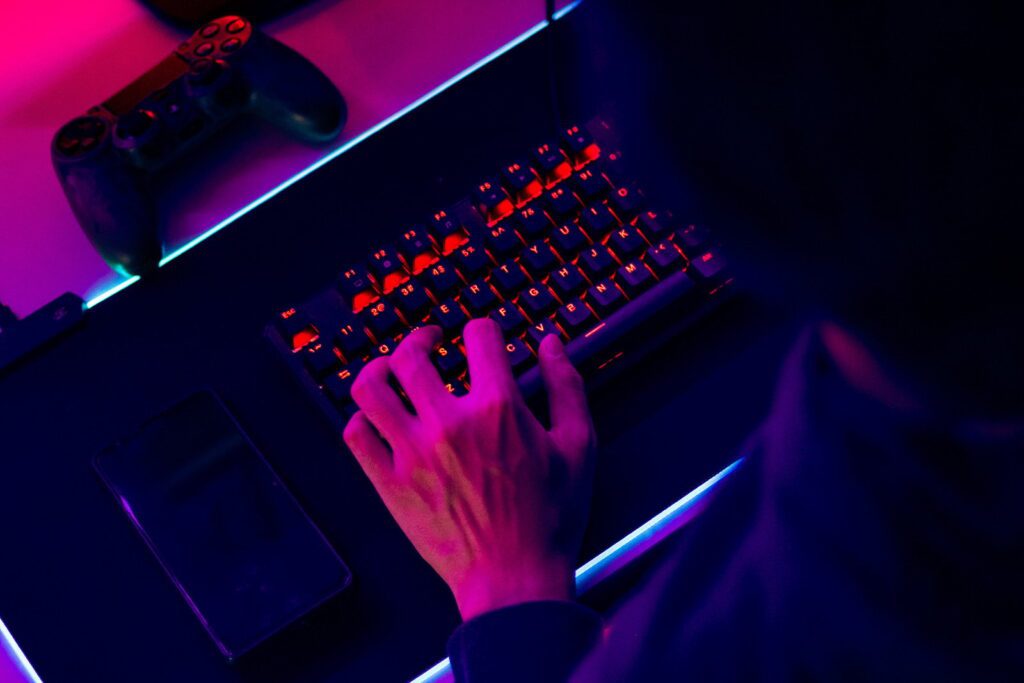Step into the ring and get ready to throw down as we take a deep dive into the thrilling world of fighting games! From humble beginnings to cutting-edge technology, join us on a journey through the evolution of this beloved genre. Whether you’re a seasoned player or just getting started, there’s something for everyone in this action-packed adventure through gaming history. So grab your controller, buckle up, and let’s explore how these virtual brawls have captured our hearts and minds over the years.
The Early Years: From Pong to Street Fighter
In the early days of gaming, simplicity reigned supreme. Games like Pong set the stage for what was to come, with basic mechanics and limited graphics captivating players around the world.
As technology advanced, so too did the fighting game genre. Enter Street Fighter, a groundbreaking title that revolutionized arcade gaming with its diverse characters and special moves.
Players were drawn in by the thrill of one-on-one combat, mastering combos and strategies to outwit their opponents. The competitive spirit soared as friends battled it out in intense matches that kept hearts racing and fingers flying across controllers.
Street Fighter’s success paved the way for a new era of fighting games, setting a high bar for future titles to meet. From those humble beginnings emerged a genre that continues to captivate gamers of all ages with its blend of skill, strategy, and adrenaline-pumping action.
The Rise of Mortal Kombat and Controversy Surrounding Violence in Gaming
When Mortal Kombat burst onto the scene in the early 90s, it shook up the gaming world with its graphic violence and fatalities that raised eyebrows. The controversy surrounding the game’s blood-soaked battles sparked debates about the impact of violence in video games on players, especially younger audiences.
Despite facing backlash from concerned parents and legislators, Mortal Kombat’s unapologetic approach to gore and brutality only seemed to fuel its popularity among gamers looking for a more raw and edgy experience. The game’s Fatalities became legendary for their over-the-top nature, pushing boundaries and testing societal norms.
Mortal Kombat forced the industry to confront questions about censorship, artistic expression, and responsible gaming. While some argued that violent content could desensitize players, others saw it as a form of catharsis or pure entertainment. Love it or hate it, Mortal Kombat undeniably left a lasting mark on gaming history by paving the way for mature themes in interactive media.
The Impact of 3D Graphics on Fighting Games
The transition to 3D graphics in fighting games marked a significant shift in the gaming industry. Players were now immersed in visually stunning environments with dynamic camera angles that added depth to gameplay. Suddenly, characters weren’t just pixelated sprites but fully realized models with intricate details and fluid animations.
With the introduction of 3D graphics, developers had more creative freedom to explore new combat mechanics and move sets. Combos became more elaborate, and players could execute precise movements like never before. The ability to sidestep attacks or maneuver around opponents added a new layer of strategy to battles.
As technology advanced, so did the realism of 3D graphics in fighting games. From motion capture for lifelike movements to detailed facial expressions during intense moments, these advancements brought characters to life in ways previously unimaginable. The impact of 3D graphics on fighting games was not just visual but also fundamentally changed how players engaged with their favorite titles.
Evolution of Gameplay Mechanics and Features
The evolution of gameplay mechanics and features in fighting games has been a fascinating journey.
From the simple button-mashing days of early titles to the intricate combo systems of modern games, players have seen a significant shift in how they interact with their favorite characters.
Developers have continuously pushed boundaries by introducing new techniques like parries, cancels, and super moves that require skill and precision to execute effectively.
In addition to refining combat mechanics, fighting games now offer robust single-player campaigns, online multiplayer modes, and character customization options that cater to a wide range of player preferences.
With each new release, fans eagerly anticipate what innovations will be introduced next, keeping the genre fresh and exciting for both newcomers and seasoned veterans alike.
Diversity and Representation in Fighting Games
Diversity and representation in fighting games have come a long way since the early days of pixelated characters. Players now have the opportunity to choose from a wide range of characters, each with their own unique backgrounds, abilities, and stories.
From strong female fighters to LGBTQ+ characters and people of different ethnicities, game developers are making an effort to ensure that everyone feels seen and included in the gaming world. This not only adds depth to gameplay but also reflects the diverse nature of our society.
By including diverse characters in fighting games, developers are breaking stereotypes and challenging traditional norms. Players can now see themselves represented on-screen, empowering them to feel more connected to the game and its storylines.
Diversity and representation in fighting games continue to evolve, creating a more inclusive gaming experience for players around the world.
The Future of Fighting Games: Virtual Reality and Beyond
The Future of Fighting Games: Virtual Reality and Beyond
As technology continues to advance at a rapid pace, the future of fighting games holds exciting possibilities. Virtual reality (VR) has already started making its mark in the gaming industry, offering players immersive experiences like never before. Imagine stepping into the shoes of your favorite fighter, throwing punches and executing combos in a virtual arena.
With VR headsets becoming more accessible and affordable, we can expect to see more fighting games embracing this technology. The level of realism and engagement that VR brings to the table is unmatched, promising an entirely new dimension to how we play and experience these games.
But it doesn’t stop there. As artificial intelligence (AI) capabilities improve, we may see fighting games incorporating smarter opponent behavior and adaptive gameplay mechanics. This could lead to more dynamic and challenging matches that keep players on their toes.
Additionally, advancements in online connectivity could pave the way for larger-scale tournaments with competitors from around the world facing off in real-time battles. The community aspect of fighting games is strong, and enhancing multiplayer features will only serve to strengthen those bonds even further.
In conclusion,
The evolution of fighting games has been nothing short of remarkable since their humble beginnings with Pong. From 2D sprites duking it out on screen to lifelike characters engaging in epic battles in stunning 3D environments, these games have come a long way.
With each new innovation pushing boundaries and exploring uncharted territories, one thing remains certain – the love for competitive combat will always drive developers to create bigger, better, and more captivating experiences for players worldwide. So gear up fighters; the future awaits!

